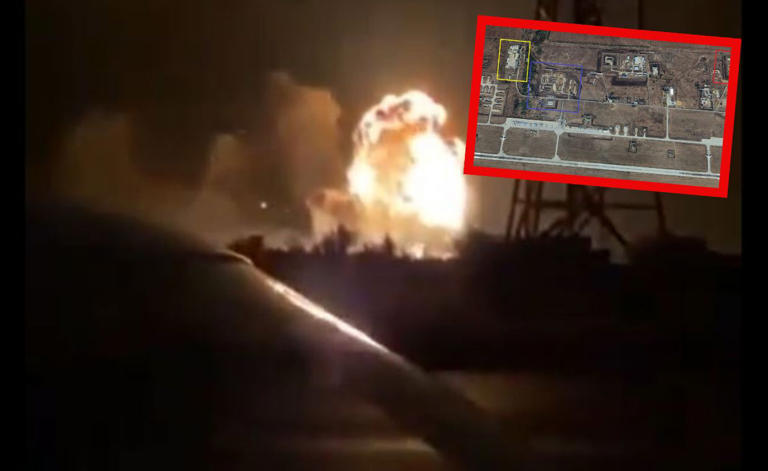
Kyiv/Moscow – June 1, 2025
In one of the most jaw-dropping operations of the war so far, Ukraine has unleashed a stealth drone attack that shredded Russia’s air power overnight, targeting four key military air bases and destroying over 40 high-value aircraft, including nuclear-capable bombers.
Officials are calling it “Operation Spider’s Web” — and it’s already being compared to a modern-day Pearl Harbor.
🎯 Precision, Patience, and Payload
After nearly 18 months of meticulous planning, Ukraine’s elite Security Service (SBU) executed a coordinated strike using FPV (first-person-view) kamikaze drones. Many of these drones were hidden in ordinary trucks and infiltrated deep into Russian territory, evading detection until the moment of ignition.
When the drones lit up the sky, the targets weren’t random:
- TU-95 “Bear” nuclear bombers
- TU-22 “Backfire” supersonic bombers
- A-50 “Mainstay” airborne command jets
All of them were destroyed in a synchronized hellfire, across Siberia’s Irkutsk, Murmansk, Ryazan, and Ivanovo — some of Russia’s most sensitive military installations.
💣 The Damage: Beyond Numbers
According to Ukrainian defense sources:
- 41 strategic warplanes were destroyed
- Estimated loss exceeds $7 billion
- Many of the aircraft were irreplaceable, no longer produced by Russia
- Nearly one-third of Russia’s long-range bomber fleet was wiped out in one night
And the impact? Devastating. These bombers weren’t just old Cold War relics — they were the engines behind cruise missile attacks on Kyiv and other cities.
🌐 Why the World Is Shocked
Just 24 hours before ceasefire talks were rumored to take place in Istanbul, Ukraine sent an unmistakable message:
“We won’t wait to be saved — we will strike when it counts.”
The attack was a blend of high-tech, old-school espionage, and raw courage. No fighter jets. No invasions. Just brains, bots, and boldness.
Military analysts are calling this a game-changing moment in drone warfare, showing how modern technology in the hands of the determined can shatter the might of even a nuclear superpower.
🔥 Russia’s Reaction: A Nervous Silence
Pro-Kremlin military bloggers are raging, calling the operation “Russia’s Pearl Harbor.”
Official Russian channels, however, remain tight-lipped — perhaps stunned at the scale and success of the strike.
Moscow’s defense ministry has neither denied nor explained the breaches.
🕸️ The Operation Behind the Flames
Named “Operation Spider’s Web”, the mission was crafted like a spy thriller:
- Drones programmed with GPS strike patterns
- Decoys deployed to confuse radar
- Coordinated midnight launches from multiple directions
- Cloaked truck infiltrations into hostile zones
And in the video footage leaked online, what’s seen is terrifying: a row of heavy bombers engulfed in flames, lighting up the night sky like fireworks over a battlefield.
🧨 A Warning Written in Fire
This wasn’t just an attack on military hardware.
It was a psychological strike — against confidence, complacency, and control.
As peace talks hover on a razor’s edge, Ukraine just redefined the rules of engagement. Not with nukes. Not with tanks. But with courage, code, and calculated fury.
The question now isn’t whether Russia will respond — but how.
And more importantly…
What happens next in a war where silence no longer means safety, and shadows carry wings of fire?